Kerman City Guide: Everything You Need to Know
Kerman: A Cultural Gem with Rich Traditions and Flavors

The city of Kerman, with an area of 240 square kilometers, is one of Iran’s major cities and the heart of the vast Kerman province located in southeastern Iran in a desert region, surrounded by the provinces of Khorasan, Yazd, Sistan and Baluchistan, Hormozgan, and Fars. This ancient desert city boasts spectacular and distinctive nature, is several thousand years old, and harbors some of Iran’s most amazing historical sites.
Contents
Must Visit Attractions
Tourist Attractions for Ancient Site Enthusiasts
With a history spanning several millennia, Kerman contains many of Iran’s historical attractions, ranging from traditional bathhouses to ancient citadels and fire temples. Every corner of this amazing city is filled with precious ancient sites that magnificently exhibit the grandeur of Iranian history, culture, and art. Some of Kerman’s most fascinating ancient sites include:
Ganjali Khan Complex
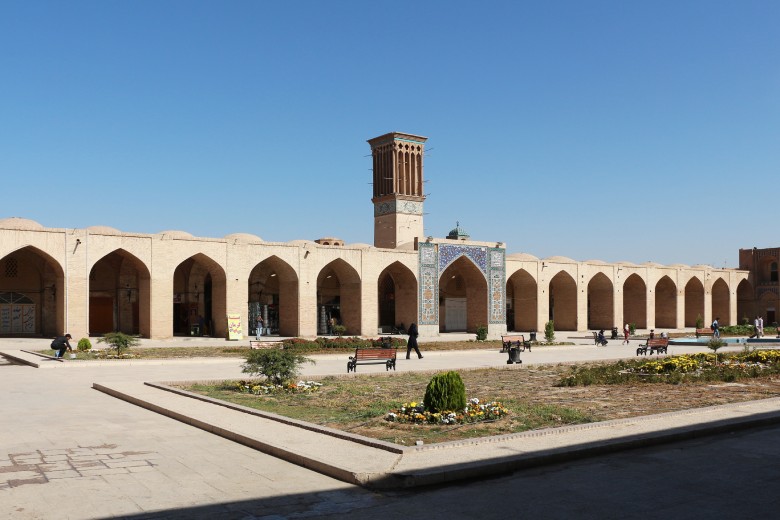
Throughout history, many rulers governed Iran; some strived for its prosperity while others sought its destruction. Ganjali Khan undoubtedly belongs to the former group. A patriot at heart, he spared no effort to develop and improve our country, especially the city of Kerman, leaving behind numerous valuable monuments and complexes.
One surviving historical structure from the Safavid era is the Ganjali Khan Complex, consisting of a square, traditional bazaar, a Mint, and bathhouse (which today serves as Kerman’s anthropology museum). Each section features intricately designed architecture in excellent condition. Visiting such a complex will surely reveal the magnificence of Iranian art and architecture during the Abbasid era, captivating you with its wondrous designs.
Vakil Bathhouse

With exemplary architecture dating back over 100 years, this bathhouse from the Zand era remains one of the most popular historical sites, now serving as a traditional teahouse and restaurant after undergoing adaptive reuse.
Anahita Temple

Wandering through eastern Kerman, you will come across a structure perched atop rocky cliffs that add to the region’s historical value – the ancient castle, also known as the Dokhtar Castle, none other than the Anahita Temple bearing the title of Kerman’s oldest ancient monument. Although little remains beyond crumbling walls worn by erosion over time, the extant sections still provide an indescribably pleasurable viewing experience.
Jabalieh Dome

Jebeliyeh Dome is another key Kerman historical site located in eastern Kerman. Jabalieh Dome, also famous as the Gabri Dome, stands out as the only stone structure of Kerman, attracting many tourists. What makes this dome exceptionally notable is its uncertain history. Some believe it was a Zoroastrian-era fire temple, while others think it belonged to the Seljuk era, though the latter seems unlikely. An intriguing tale also persists that camel milk was used instead of water in the dome’s plaster, contributing to its remarkable durability. Unfortunately, there are no reliable sources to confirm this story.
Tourist Attractions for Nature Lovers
The charming and enchanting nature of Kerman province has always been one of the main reasons for visiting this spectacular city. From its lush forests and soaring mountains to its barren deserts and secluded, untouched wastelands, every inch of Kerman province is brimming with natural wonders.
The Pardisan Qaem Forest
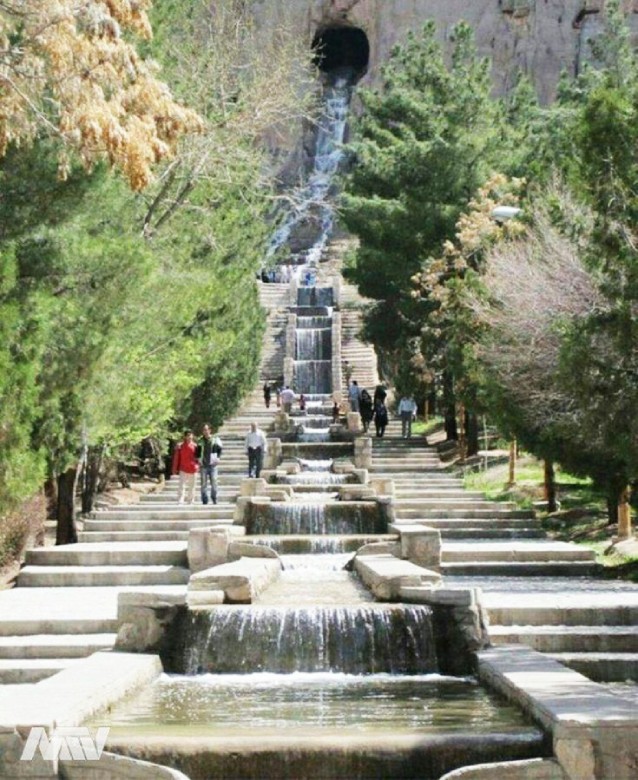
The existence of such an emerald, wondrous nature in a province with a desert climate is a precious blessing that should not be missed under any circumstances. This 300-hectare green area, known as the lungs of Kerman City, is the best place to spend a delightful afternoon in Kerman Province. The Pardisan Qaem Forest has become popular for athletes and nature lovers with its scenic views, great amenities, and hiking-friendly mountains.
Shazdeh Mahan Garden

Just 2 km from Mahan town lies a colorful paradise nestled in the foothills of the charming Taq-e Geran mountains, leaving every tourist in awe of its beauty. Dating back to the Qajar era, Shazdeh Mahan Garden is a lost paradise amidst a barren desert – an oasis to escape the unbearable heat of the desert and a sanctuary to get away from life’s worries. Its immense historical value earned it a UNESCO World Heritage Site listing in 2011. All elements of traditional Persian garden beauty come together here to turn Shazdeh Mahan into one of the most beautiful gardens in Iran.
Fathabad Garden

Also known as the Biglarbigi Garden, this Qajar-era garden boasts mesmerizing scenery. It is a popular sight among culture and art enthusiasts thanks to its stunning architecture and creative design. Located 25 km from Kerman, it is highly recommended to all travelers to this spectacular city.
Kerman Mountainside

For those who wish to spend a memorable afternoon immersed in Kerman’s natural beauty, the mountainside region is just the spot they are looking for. It is 30 km north of Kerman and encompasses abundant natural blessings like verdant plains, lush gardens, raging rivers, deep valleys, and towering waterfalls. It is an ideal secluded spot for hiking and reveling in nature’s splendor.
Sirch Ski Resort

Hard to believe, but the largest ski resort in southeastern Iran lies in the desert city of Kerman! A winter paradise for skiing enthusiasts, it offers expansive runs and slopes apt for ascents and ski descents. So, if you enjoy skiing, don’t miss out on visiting this resort located at an elevation in Sirch, 80 km from Kerman.
Shahdad Desert
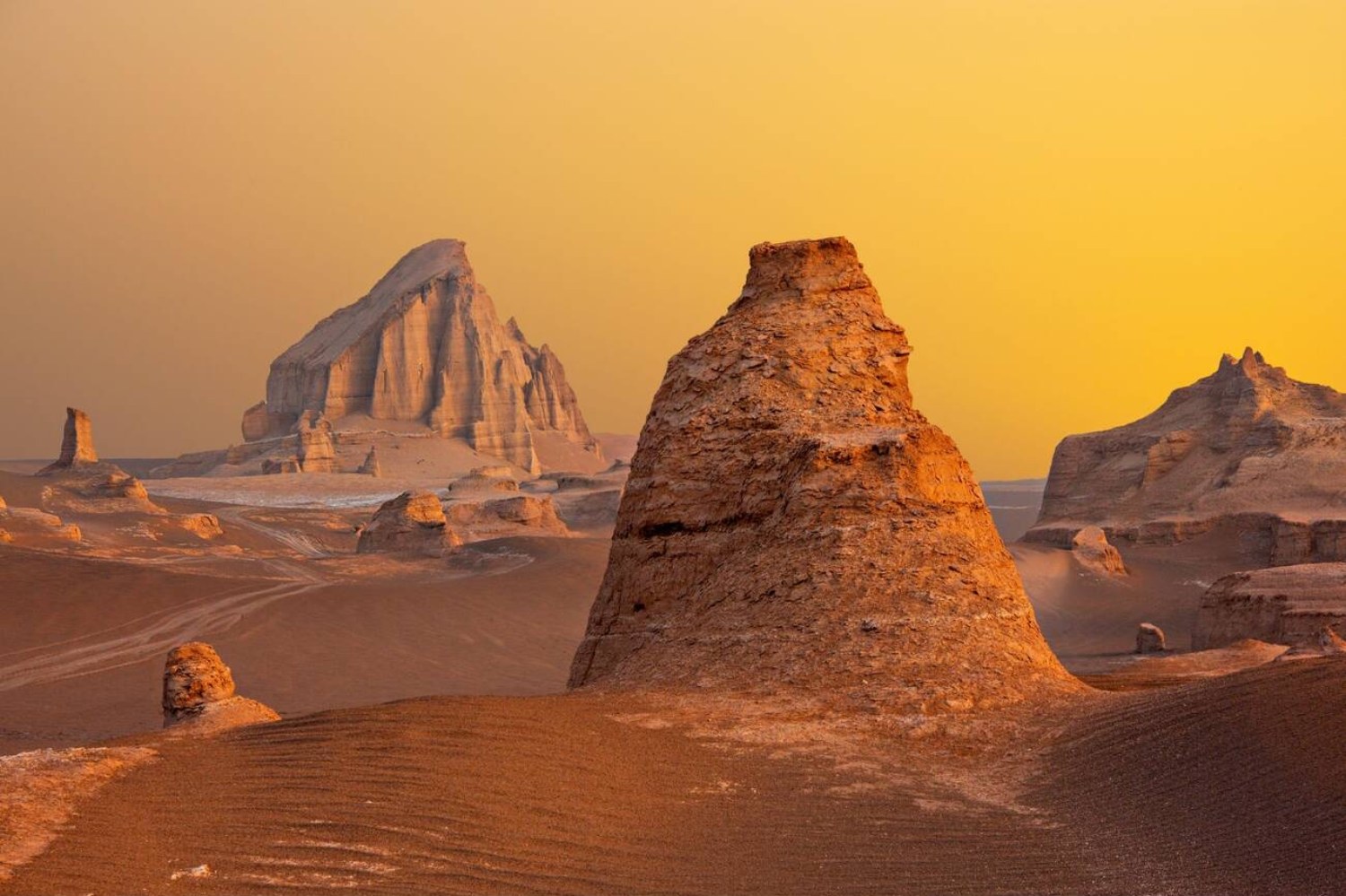
Kerman is a city of contrasts, reconciling scorching deserts and frigid highlands thanks to its unique climate. Simply continue towards Shahdad after visiting the ski resort to watch the wintry chill transform into the sweltering summer heat and barren wastelands burst into verdant. The Shahdad region is a world unto itself, encompassing various ancient sites and attractions like Haj Mohammad Taghi Cistern, Shahdad Watermill, Shahdad Ancient Castle, ancient cemeteries, and Bahram Fortress. However, what draws hordes of tourists. is none other than the spectacular Shahdad Desert. Its dreamlike, staggering vistas seem almost unreal – towering sand pyramids erected by the wind stand tall amidst the barren expanse, creating a surreal and ethereal atmosphere. Without a doubt, visiting the Shahdad Desert, where nature astonishes you with a unique form of beauty, is highly recommended to all desert lovers.
Shahdad Kaluts

The Shahdad Kaluts are one of Kerman’s most beautiful natural attractions for nature lovers. Kaluts are unique natural cube-shaped formations created through wind and water erosion over time. The world’s most stunning and largest Kaluts can be found in the United States, Peru, and Iran. The tallest Iranian kaluts are the Shahdad kaluts, located about 140 km from Kerman City. To take a day trip around Kerman to the Kaluts, you must set out early in the morning. At first glance, you may think the kaluts are remnants of an ancient city, but they are one of nature’s masterpieces.
Cultural Experiences
Kerman province is a province of museums.
The Zoroastrian Anthropology Museum

The Zoroastrian Anthropology Museum is the world’s first and only Zoroastrian anthropology museum. Construction of this museum was completed in 2001. The oldest artifacts in the museum are a handwritten Gathas manuscript and a handheld fire holder engraved with the date 1207. The Kerman Zoroastrian Anthropology Museum houses a collection of fire holders, oil and resin burners, and laleh lamps. Another section of the museum displays 50 to 150-year-old garments. Makna, lechak, chador, coat, embroidered shirt, and pants are among the varieties of women’s clothing preserved here, representing Zoroastrian women’s attire.
The Museum of Contemporary Industrial Art

The Kerman Museum of Contemporary Industrial Art houses authentic works by world-renowned artists and exhibits various aspects of Iranian visual arts. About half of the works belong to Master Saeed Aliakbar Sanati. At the same time, over 83 other contemporary Iranian artists and 16 foreign artists contribute the remaining pieces – undoubtedly the most unique collection in the country after the Tehran Museum of Contemporary Art, constituting the richest trove of contemporary Iranian and world art within Iran.
Kerman National Library

The Kerman National Library (Khorshid Textile Factory) dates back to the first Pahlavi era and is Registered under number 2419 on September 21, 1999, it is one of Iran’s national heritage sites. This beautiful single-story brick building with a pleasant courtyard is worth visiting by the curious.
Cuisine
One taste of Kerman’s traditional cuisine can make you a lifelong fan. The food variety in this city is so extensive that delicious options exist for every palate – from hearty legume stews to mouthwatering meat dishes that set every tourist’s mouthwatering. The diversity and abundance of this city’s cuisine are renowned among locals and visitors alike. Some of Kerman’s most popular dishes that have earned global fame include:
Boz Ghormeh
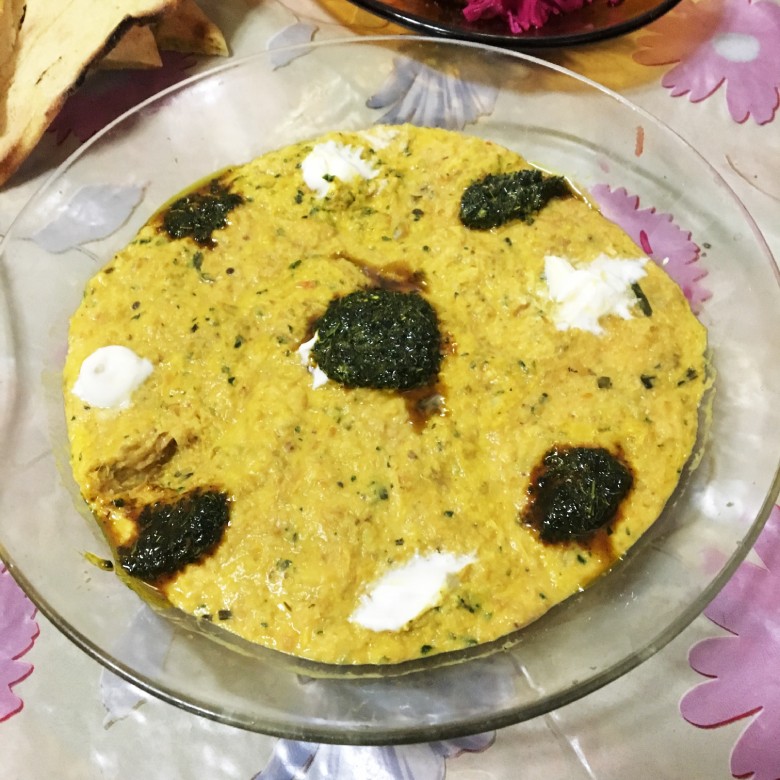
This delicious dish, named for the Kid (baby goat) meat in its ingredients, tops the list of Kerman’s tastiest, heartiest meals. Resembling barley soup in appearance, additions like saffron ensure superior aroma and flavor that make it a treat for fans of our country’s local delicacies.
Khoresh Aloocheh (green plum stew)

Simple ingredients like veal, green plums, Pinto beans, and herbs like dill and Coriander come together through a miraculous recipe known only to Kerman’s ladies.
Lapeh polo with cumin

Nowadays, cumin’s abundant health benefits are well-established, and its consumption is widely recommended by many nutrition experts. It may interest you that Kerman locals habitually incorporate this addition into their dishes, which is how several such creations have earned a spot in the colorful, varied menus of the city’s eateries. One of the most popular is Lapeh polo with cumin, which combines ingredients like rice, split pea, turmeric, ground lamb, chili pepper, cumin, onion, and rice.
Amaag Ash or Omag Ash

Make sure to try Amaach Ash, locally known as Ash-e Shooli. This dish contains a mix of wheat flour, herbs, vinegar, and Qarequrut.
Gandom Shir Ash

Made from chickpeas, meat-on-the-bone, noodle strips, Kashk, wheat, garlic, onions, and fried mint, Gandom Shir Ash is another traditional filling Kerman soup we highly recommend trying during your stay.
Meatball Soup with cumin

Cumin holds an undeniably special position in Kerman’s traditional food. This dish is cooked with meat, cumin, onions, and garlic.
Day trips
Arg-e Bam

Arg-e Bam is a must on any Kerman travel itinerary. It’s the world’s largest mud-brick structure. This historic structure is listed among UNESCO’s World Heritage sites. Unfortunately, the devastating 2003 Bam earthquake severely damaged this magnificent citadel. Yet it has retained its glory and remains one of the most important historical sites of the city. Over the past 15 years, Arg-e Bam has been largely restored to continue to shine as a historical wonder in Iran and worldwide.
Rayen Citadel

After Bam Citadel, Rayen Citadel is the world’s second-largest mudbrick structure – a popular resort hosting hoards of visitors. Situated 105 km southeast of Kerman, this nationally registered landmark spans over 22,000 sq m at the top of an ancient mound. Dating back to Sassanid times with similarities to Bam Citadel, it is also known as Mirza Hossein Khan Citadel for serving as the capital of the beloved Zand rulers like Mohammad Hasan Khan and his son Mohammad Ali Khan.
Rayen Citadel has a square layout encompassing 10 m high towers and ramparts. Its gorgeous gateway lies to the east, opening onto various sections like the stables, gym, and aristocratic and public districts.
Rageh Canyon

Rageh Canyon near Rafsanjan is another key natural site in Kerman Province. This deep, at times 80-meter canyon carved out by a 20 km long river passing through it is considered Iran’s third geopark after Qeshm and Aras. Formed through erosion over 20,000 years, the picturesque Rageh Canyon remains one of Kerman’s top attractions. When traversing this canyon, you may often have to pass through the ever-flowing river, so bring adequate gear. The nights here offer phenomenal stargazing.
Tomb of Shah Ne’matollah Vali

Another popular historical sightseeing spot for Kerman day trips is the Tomb of Shah Ne’matollah Vali, located 37 km from Kerman on Valiat St off Heft Bagh Road. This tomb complex encompasses various structures dating from the Timurid to the Qajar eras. The tomb has a rectangular chamber with a domed ceiling, originally constructed in 1440 AD.
Registered nationally as Iranian heritage, it bears decorations like plasterwork, turquoise, lapis lazuli tiles, and Solomonic patterns. Its grave marker is made of marble, inscribed with the names of the 12 Imams and Quranic verses. Other sections include the Shah Abbasi porch, library, museum, and Amir Nezam Garousi’s tomb.
Sang Garden

Sang (Stone) Garden is one of the strangest and most unique destinations for a day trip from Kerman. An interesting tale exists about its creation. In 1961, Darvish Khan Esfandiarpoor lost his gardens due to land reforms and created this stone garden in protest. He stopped irrigating his garden until all trees withered and died, later planting their dried trunks and hanging stone fruits using wire. The garden now spans 1000 sq m with all trees bearing stone fruits. Darvish Khan passed away in 2007 at the age of 83. Visiting this stone garden and hearing its bizarre inception story promises an intriguing time.
Simak Waterfalls

Located 35 km from Kerman City, Simak Valley contains numerous waterfalls. The Simak waterfalls are popular sightseeing spots for family picnics and day trips around Kerman, especially for nature lovers. The valley walls are ideal spots for professional climbers and mountaineers.
Shengestan Valley

Shengestan Valley lies 30 km from Kerman City and is close to the Simak Falls. This valley’s mild climate and lush nature have turned it into one of the go-to destinations for sightseeing trips around Kerman. If you plan to visit Shengestan Valley, carry essentials and wear suitable shoes. The valley floor is rocky, and the terrain is not easily traversable for everyone.
Public transport

The city of Kerman enjoys very good public transport, with an effective bus network spreading through the city like arteries, capable of taking you to all corners of this spectacular city.
If any location is inaccessible by public transport, you can easily take the Kerman line taxis to reach even the furthest points of the city.
You can also use online taxi services like Snapp and Tapsi to get around. These services allow you to order a taxi from any point to your desired destination. To use wireless taxis in this city, you can also call 133.
Safety consideration
- Be cautious of pickpockets, especially in crowded areas like bazaars. Keep valuables secured and be aware of your belongings at all times.
- Use licensed taxis like Snapp and Tapsi when possible, and avoid taking unmarked taxis off the street. Confirm the fee before getting in to avoid billing issues later.
- Be respectful of local customs and dress codes. Both men and women should dress modestly when visiting holy sites.
- Keep photocopies of your passport and other important documents in case they get lost or stolen. Also be sure to have emergency phone numbers on hand.
- Check government websites for the latest travel advisories before your trip.
- Avoid political protests and demonstrations while visiting.
As long as you use common sense and take basic precautions, Kerman is a safe city full of warm, welcoming people.
Souvenir
handicrafts make for the best souvenir shopping in any city. If you too plan on bringing back souvenirs from your Kerman trip for loved ones, the variety of goods in Kerman Province leaves you spoiled for choice.
Qotab

Qotab is a dessert that ranks among the most popular Kerman souvenirs. While qotab may be found across Iranian cities, Kerman’s qotab is in a league of its own! It’s an unparalleled combination of pistachios coated with sugar powder. Many historians believe this treat dates back to the Achaemenid Empire.
Zireh Spice (cumin)

With the optimal dry climate for growth, Kerman can be considered the home of Iranian cumin production. Both black and green varieties are widely grown locally and are considered premium-quality cumin. So definitely add zireh spice shopping to your Kerman travel plans for personal use or as the perfect souvenir.
Kolompeh

Our top recommendation for dessert lovers is to not miss out on the signature Kolompeh during your stay. The delicious combination of dates and walnuts wrapped in a pastry made of wheat flour, cinnamon, and rosewater will surely turn you into an ardent fan after the first bite.
Ghovvatoo

The authentic and nutritious Ghovvatoo is among Kerman’s most distinct Snacks that have caught the attention of many visitors, becoming one of the most popular Kerman Souvenirs. This powder-like dessert is made from wheat, barley, and other medicinal herbs that are finely milled with sugar. You can either dissolve Ghovvatoo in milk or serve it alongside tea.
Rafsanjan Pistachios
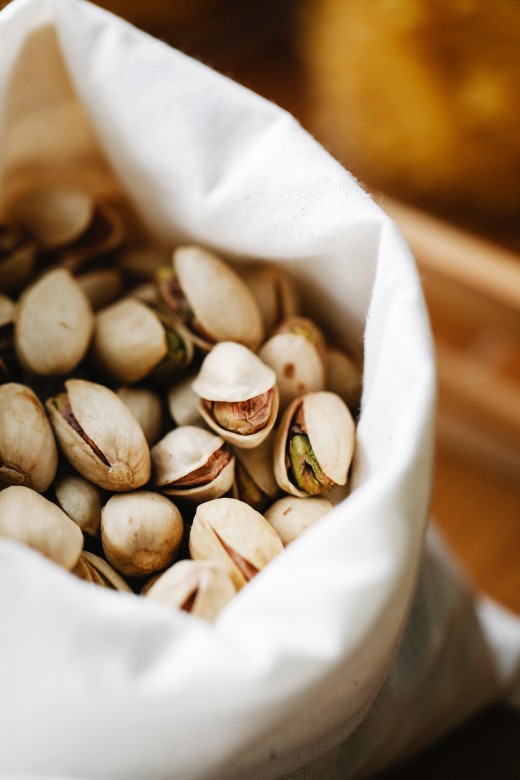
Pistachios are among the most important Kerman souvenirs. Remember to buy some premium Rafsanjan pistachios from Kerman during your trip. The dry climate here creates ideal pistachio orchards. Aside from pistachios, the province’s famed walnuts also make great gifts.
Komach-Sehen
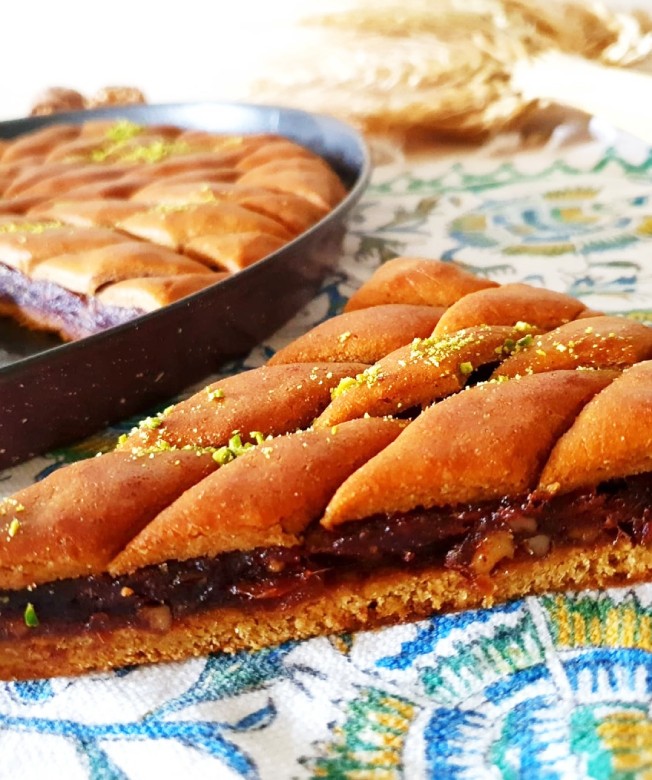
Komach-Sehen is another popular Kerman dessert you must try when visiting. This treat is made by preparing dough from wheat sprouts, cumin, and cinnamon filled with ingredients like walnuts, pistachios, and dates. It’s a traditional Kerman sweet.
Kerman Rugs
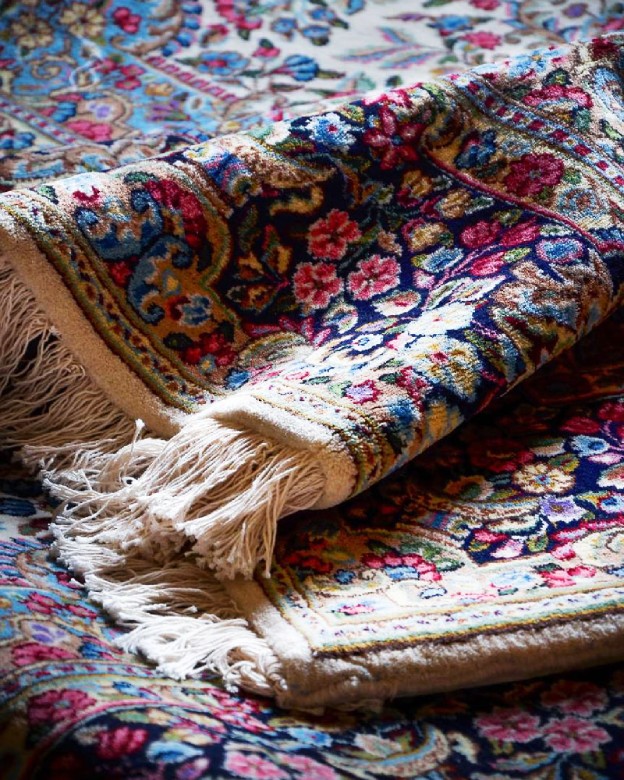
Aside from all the tasty Kerman treats, the city is famed for its exceptional high-quality rugs, hand-woven by highly skilled Kerman weavers. These rugs earn acclaim for their patterns, colors, designs, and premium materials across Iran and worldwide.
Weather
Kerman is a city with an always clear, blue sky. Kerman is the third provincial center located on a tall, elevated point, so it always has a clear, pristine sky. You rarely see polluted, dusty air in Kerman; no matter which season you travel, you will thoroughly enjoy its healthy air. Although Kerman is one of Iran’s desert cities, its location next to Mount Saheb Al-Zaman and its high altitude has made it have a more moderate and pleasant climate compared to other Iranian desert cities. Kerman’s weather is hot and dry during summer days but has cool nights. Winters also come with cold nights, which become less cold as the day begins.
Accommodation
Fortunately top quality hotels have been established in Kerman over the past decade that you can have a great time.
BOOK ONLINE
Kerman Hotels
5-star Pars Hotel

Pars Hotel is considered the best hotel in Kerman and one of Iran’s most luxurious and modern hotels. Pars International Hotel opened in 2001 in one of the best neighborhoods. 197 luxurious and equipped accommodation units (rooms, suites, and apartment units) are included on six floors, and you can stay in one of the units according to your needs and budget. This hotel is a member of the Pars Hotels Group, and like other Pars brand hotels, it is very popular and reputable. From luxury rooms to magnificent restaurant tables, the Pars Kerman Hotel is decorated with stunning beauty and a unique layout.
Jahangardi Hotel

The Kerman Jahangardi Hotel is one of the modern 4-star hotels in the city of Kerman, which opened in 1974. This hotel was renovated in 2018 to improve the quality and comfort for guests. The Kerman Jahangardi Hotel has a very convenient location and is situated close to Kerman’s tourist attractions such as the Jame Mosque, the traditional bazaar, the Ganjali Khan complex comprising a bathhouse, inn, and caravanserai. The facilities and services offered at this hotel include a traditional tea house, several Iranian and international restaurants, a coffee shop, room service, parking, in-room safe deposit boxes, internet access, taxi service, green space, conference halls, billiards hall and gym, as well as badminton and foosball courts.
Caravanica Hotel

One of the best hotels in Kerman, near the Ganj Ali Khan complex, is the Caravanica Hotel. This hotel is one of the 500-year-old caravansaries of Iran that has been turned into a hotel after restoration and is considered one of the most beautiful accommodations in Kerman, where you can enjoy the traditional atmosphere.
Hezar Hotel

Hazar Hotel is one of the best hotels in Kerman, known as the perfect hotel here. Hazar Hotel was built on five floors and has 42 luxury rooms. This hotel started operating in 1993, and to improve the quality of services and update its exterior and interior façade, it was renovated in 2014.
Hazar Hotel is in the heart of the city and is close to administrative, commercial, and tourist centers and is considered one of the best 3-star hotels in Kerman. No doubt, by renting a room at Hazar Hotel, you will have a comfortable and memorable stay there.
Shopping Centers
Whether you wish to shop at a luxury mall or wander traditional markets, Kerman is one of the few cities that won’t disappoint. This ancient city’s vast shopping complexes and malls can satisfy every tourist.
Shafa Commercial Center

Perhaps nowhere in Kerman beats this 2-story mall for leather goods specialists. With 35 retail outlets at Shafa St’s end, it offers affordable, high-quality crafts and leather goods alongside conveniences like parking, café, elevator, and restrooms for an enjoyable shopping experience.
Atlas Mall

To visit one of Kerman’s biggest and finest malls, head to Atlas Mall on Imam Khomeini Blvd. Find diverse goods, from medical equipment to sports/art supplies. Atlas Mall also provides excellent amenities like dining and entertainment to meet shoppers’ needs.
Setareh Department Store
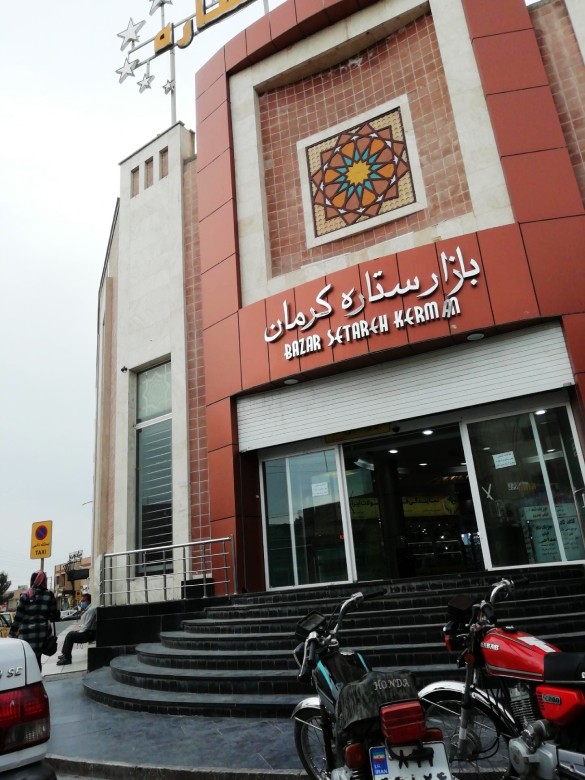
Ask Kerman locals for the best, most modern shopping center, and this place will undoubtedly come up. With nearly everything from electronics to clothing to perfumes under one roof, it’s among a few malls catering to all your needs.
Kerman Grand Bazaar

Also known as Ganjali Khan Bazaar, its great age (8th century) earns it a spot on Kerman’s must-see list. Made up of various sections built in different eras by various rulers per experts, the bazaar’s distinct architecture and charming traditional atmosphere enhance the joy of browsing and shopping, transporting visitors to ancient times.
Restaurants
Vakil Teahouse

Vakil Teahouse is one of Kerman’s best restaurants. This beautiful, comfortable teahouse is one of Kerman’s top dining spots.
There is often live music (usually santur) to enjoy while dining. The atmosphere at this traditional restaurant is lovely. Vakil Teahouse is actually a beautifully restored bathhouse with charming décor.
Keykhosro Restaurant

Keykhosro Restaurant doesn’t look very fancy or modern, but the food quality and atmosphere are exceptional. A towering date palm tree in the middle makes for a one-of-a-kind view while dining. It features a mix of traditional and regular tables. The traditional copper dishware and cups make the dining experience even more delightful.
Kabab Khoran Restaurant

At Kabab Khoran restaurant in Kerman, you can sit around a table with friends and family in the friendliest, simplest, and most stylish setting and order your favorite kebabs! If you plan on traveling to Kerman, try this restaurant. The food here is simple yet delicious and cooked extraordinarily well. The place is simply decorated but very clean overall and beautiful.
Vita Restaurant

Vita Restaurant is undoubtedly another of Kerman’s finest; it is a calm spot with friendly staff. Set beautifully within Kerman’s Jahangard Hotel courtyard in a great city location, dining at Vita will be a wonderful memory for all travelers to this lovely city. While the menu may look like your average fast food, you’ll be amazed at the taste and quality once you try the dishes!
Maks Restaurant
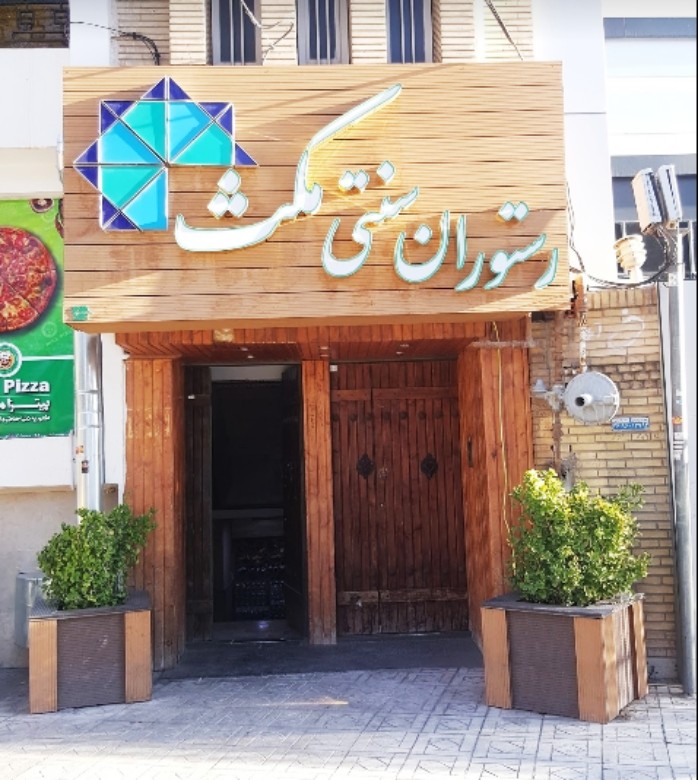
Beautiful venue, delicious food (especially the “Boz Ghormeh”), easy access, and friendly staff make this one of Kerman’s best restaurants worth trying out. Maks is a relatively affordable restaurant, so you should expect something casual.
Aghababa Traditional Restaurant

One of the best restaurants in Kerman, this place is a historical house turned into a traditional restaurant. The calm atmosphere, mostly local traditional foods, and the well-mannered and sharply dressed staff will undoubtedly give you and your company a delightful experience. Aghababa’s local dishes are very delicious, and the restaurant is in a secluded yet magnificent spot in the traditional bazaar. It is among the best choices for reasonably priced, authentic Kermani cuisine.







This travel guide to Kerman provides a detailed overview of the city’s historical and natural attractions. It highlights must-see sites such as the Ganjali Khan Complex, Vakil Bathhouse, and Anahita Temple, each offering a glimpse into the region’s rich heritage. The article also introduces nature lovers to stunning locations like Shazdeh Mahan Garden and the Pardisan Qaem Forest. For those interested in both culture and nature, Kerman presents a unique blend of ancient architecture and scenic landscapes that make it an essential destination.